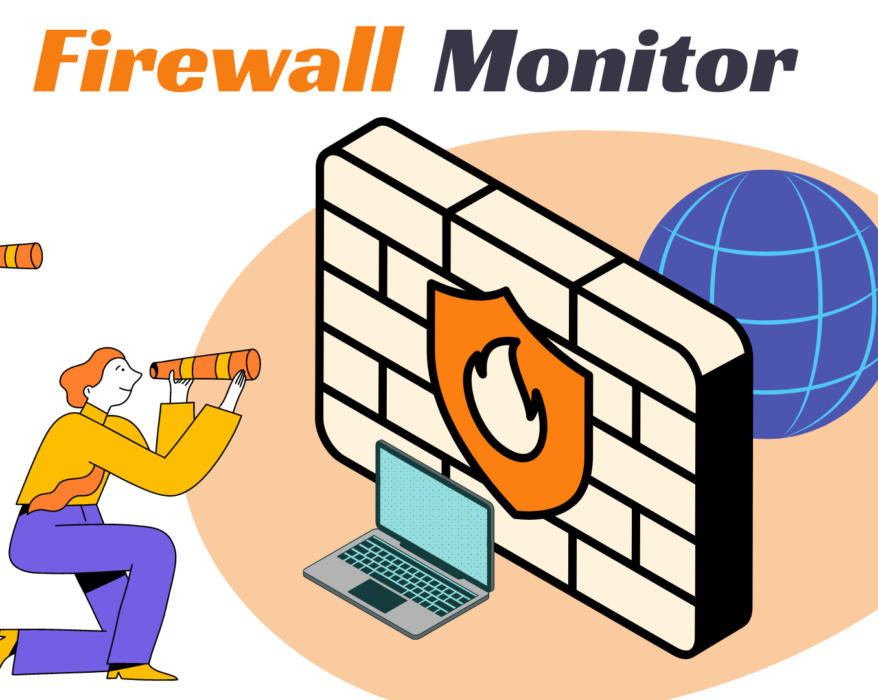RemoteIoT Firewall Tutorial: Your Ultimate Guide To Securing IoT Networks
Listen up, tech enthusiasts! If you’ve ever wondered how to secure your IoT devices from cyber threats, you’re in the right place. RemoteIoT firewall tutorial is the key to protecting your network, and this guide will walk you through every step of the process. Whether you’re a beginner or an advanced user, we’ve got you covered. So, buckle up and let’s dive into the world of IoT security!
Imagine this: your smart home devices, from thermostats to security cameras, are all connected to the internet. Now, what happens if someone hacks into your network? Scary, right? That’s where the RemoteIoT firewall comes in. It’s like having a digital bodyguard for your IoT devices, ensuring that only authorized traffic gets through.
This tutorial isn’t just about technical jargon; it’s about empowering you to take control of your network’s security. We’ll break down complex concepts into bite-sized pieces, so even if you’re not a tech wizard, you’ll be able to follow along. Let’s get started!
Read also:Who Is Anja Ravello Unveiling The Life Career And Secrets Of This Fascinating Personality
Understanding RemoteIoT Firewalls
What is a RemoteIoT Firewall?
A RemoteIoT firewall is basically a security system designed specifically for Internet of Things (IoT) devices. Think of it as a gatekeeper that monitors and filters incoming and outgoing traffic on your network. Its job is to block malicious activity while allowing legitimate connections.
Here’s the deal: IoT devices are often overlooked when it comes to security. Unlike computers or smartphones, they don’t have built-in firewalls or antivirus software. That’s why a dedicated RemoteIoT firewall is essential for safeguarding your smart devices.
Why Do You Need a RemoteIoT Firewall?
Let’s face it, cybersecurity threats are on the rise. Hackers are getting smarter, and IoT devices are becoming prime targets. A RemoteIoT firewall acts as your first line of defense against these threats.
- Prevents unauthorized access to your network
- Protects sensitive data from being stolen
- Blocks malware and other malicious software
- Monitors network activity in real-time
Without a proper firewall, your IoT devices are like open doors for cybercriminals. Don’t let that happen to you!
Setting Up Your RemoteIoT Firewall
Step 1: Assess Your Network
Before you install a RemoteIoT firewall, it’s important to understand your network setup. Take inventory of all your IoT devices and identify potential vulnerabilities. This will help you determine the best firewall solution for your needs.
For example, if you have a large number of smart devices, you might need a more robust firewall. On the other hand, if you only have a few devices, a simpler solution might suffice.
Read also:Angela Halili And John A Journey Of Love Fame And Success
Step 2: Choose the Right Firewall
There are several RemoteIoT firewall options available, each with its own strengths and weaknesses. Some popular choices include:
- pfSense: An open-source firewall that’s highly customizable
- Untangle: A user-friendly firewall with a focus on ease of use
- OpenWrt: A lightweight firewall ideal for smaller networks
When choosing a firewall, consider factors such as budget, scalability, and ease of use. You want a solution that fits your specific requirements.
Step 3: Installation and Configuration
Installing a RemoteIoT firewall can be a bit tricky, but don’t worry—we’ve got you covered. Here’s a step-by-step guide to help you through the process:
- Download and install the firewall software on your router or dedicated hardware
- Access the firewall’s web interface using a browser
- Set up basic network settings, such as IP addresses and DNS
- Configure firewall rules to allow or block specific types of traffic
- Test the firewall to ensure it’s working properly
Remember, the key to a successful installation is attention to detail. Take your time and double-check each step to avoid any issues down the road.
Configuring Firewall Rules
Understanding Firewall Rules
Firewall rules are the heart of any RemoteIoT firewall. They determine which types of traffic are allowed or blocked on your network. For example, you might want to block all incoming traffic except for specific IP addresses or ports.
Here’s a quick rundown of the most common firewall rules:
- Allow all outgoing traffic
- Block all incoming traffic except for specific services
- Set up port forwarding for specific devices
- Create exceptions for trusted devices or networks
By configuring these rules properly, you can significantly enhance the security of your IoT network.
Best Practices for Configuring Firewall Rules
When setting up firewall rules, it’s important to follow best practices to ensure maximum security. Here are a few tips to keep in mind:
- Start with a default deny policy: Block all traffic by default and only allow specific exceptions
- Use strong authentication: Require passwords or certificates for accessing sensitive services
- Regularly update rules: Keep your firewall rules up to date to address new threats
- Monitor network activity: Keep an eye on your network traffic to detect any suspicious behavior
These practices might seem like a hassle, but they’re worth it in the long run. A secure network is a happy network!
Common Mistakes to Avoid
Mistake 1: Ignoring Default Settings
One of the biggest mistakes people make is leaving their firewall on default settings. This can leave your network vulnerable to attacks. Always take the time to customize your firewall settings to meet your specific needs.
Mistake 2: Overlooking Firmware Updates
Another common mistake is neglecting firmware updates. Manufacturers frequently release updates to fix bugs and address security vulnerabilities. Make sure you keep your firewall firmware up to date to stay protected.
Mistake 3: Failing to Test Your Configuration
Finally, don’t forget to test your firewall configuration after making changes. A small mistake in your rules could leave your network exposed. Always double-check your settings to ensure they’re working as intended.
Advanced Features of RemoteIoT Firewalls
Intrusion Detection and Prevention
Many RemoteIoT firewalls come with advanced features like intrusion detection and prevention systems (IDPS). These systems monitor your network for signs of malicious activity and take action to stop it before it causes damage.
For example, if someone tries to brute-force their way into your network, the IDPS will detect the attack and block the IP address. This adds an extra layer of security to your IoT devices.
Network Segmentation
Network segmentation is another powerful feature of RemoteIoT firewalls. It allows you to divide your network into smaller, isolated segments. This means that even if one segment is compromised, the rest of your network remains secure.
For instance, you might want to segment your smart home devices from your work devices. This ensures that a breach in one area doesn’t affect the other.
Real-World Examples of RemoteIoT Firewalls
Case Study 1: Protecting a Small Business
Let’s say you own a small business with a few IoT devices, such as security cameras and smart lighting. By implementing a RemoteIoT firewall, you can protect your network from unauthorized access and data breaches.
In this scenario, you might choose a lightweight firewall like OpenWrt. It’s easy to install and configure, making it perfect for small businesses with limited IT resources.
Case Study 2: Securing a Large Enterprise
Now imagine you’re in charge of securing a large enterprise with hundreds of IoT devices. In this case, you’ll need a more robust firewall solution, such as pfSense.
With its advanced features and scalability, pfSense can handle the demands of a large network. Plus, its open-source nature means you can customize it to meet your specific needs.
Troubleshooting Common Issues
Issue 1: Connectivity Problems
If you’re experiencing connectivity issues after installing your RemoteIoT firewall, don’t panic. The problem is likely related to your firewall rules. Double-check your configuration to ensure that all necessary traffic is allowed.
Issue 2: Performance Bottlenecks
Another common issue is performance bottlenecks. If your firewall is slowing down your network, you might need to upgrade your hardware or optimize your rules.
For example, if you have a large number of rules, consider consolidating them to reduce overhead. This can improve the overall performance of your network.
Conclusion
And there you have it, folks! A comprehensive guide to RemoteIoT firewall tutorial. By following the steps outlined in this article, you can secure your IoT network and protect your devices from cyber threats.
Remember, cybersecurity is an ongoing process. Stay vigilant and keep your firewall up to date to ensure maximum protection. And don’t forget to share this article with your friends and colleagues who might find it useful.
Now it’s your turn! Have you ever used a RemoteIoT firewall before? What challenges did you face, and how did you overcome them? Leave a comment below and let’s start a conversation.
Table of Contents
- Understanding RemoteIoT Firewalls
- Why Do You Need a RemoteIoT Firewall?
- Setting Up Your RemoteIoT Firewall
- Configuring Firewall Rules
- Common Mistakes to Avoid
- Advanced Features of RemoteIoT Firewalls
- Real-World Examples of RemoteIoT Firewalls
- Troubleshooting Common Issues
- Conclusion
That’s all for now, folks. Until next time, stay safe and keep your networks secure!
![[PDF] Firewall free tutorial for Beginners](https://www.computer-pdf.com/documents/covers/0175-firewall-tutorial.pdf.png)

